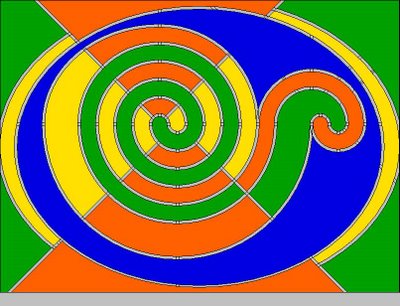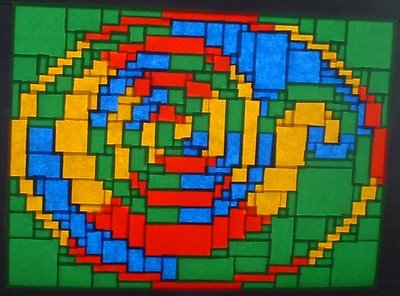

Decorative pyramids have long been an interest of mine. Today, I am going to share two with you. The first is a yin yang model. This is similar to one that hung from the diffuser in the design department of an architect’s office in downtown Atlanta in the nineties. The Yin Yang motif works well with the shape even before I learned about the magic of arithmetic involving pyramids.


Mathematically, the pyramids of Egypt have an interesting feature. You take the height, and call it the radius of a circle. The circumference of the circle is equal to the four base sides. Now, on my cardboard pyramids, the height is 6", and the base is 9 3/8". Thus, the four base sides are 37.50". The radius of 6", x2 x pi, should be equal to this. Okay, 6"x2x3.14= 37.68. This is a difference of .18", or .48% of the four base sides. This could be the result of a measuring error, or it could be that my pyramids are not perfect.




Lizards crawling on a pyramid are the other photo feature for this installment. The work of M.C.Escher is another fascination of mine. Now, this picture is based on hexagons, or six sided figures, which can be reproduced to infinity. These figures have 60 degree sides, while a pyramid has 58-58-64 degree angles. The question arises, how can you transpose a 60 degree figure on a 58 degree base? The answer is, you cannot. At least I cannot...I imagine some student with high powered computers and math skills could, but a slacker like myself cannot. So, to make it all come out even, I drew a series of "mutant" lizards.
This, btw, is the last image that I drew by hand. Of course, I kept my templates, erasers, and straight edges, and may make a manual comeback someday. While I was drawing the "lizard" pyramid, I learned how to draw on a computer, and have not looked back since.
































